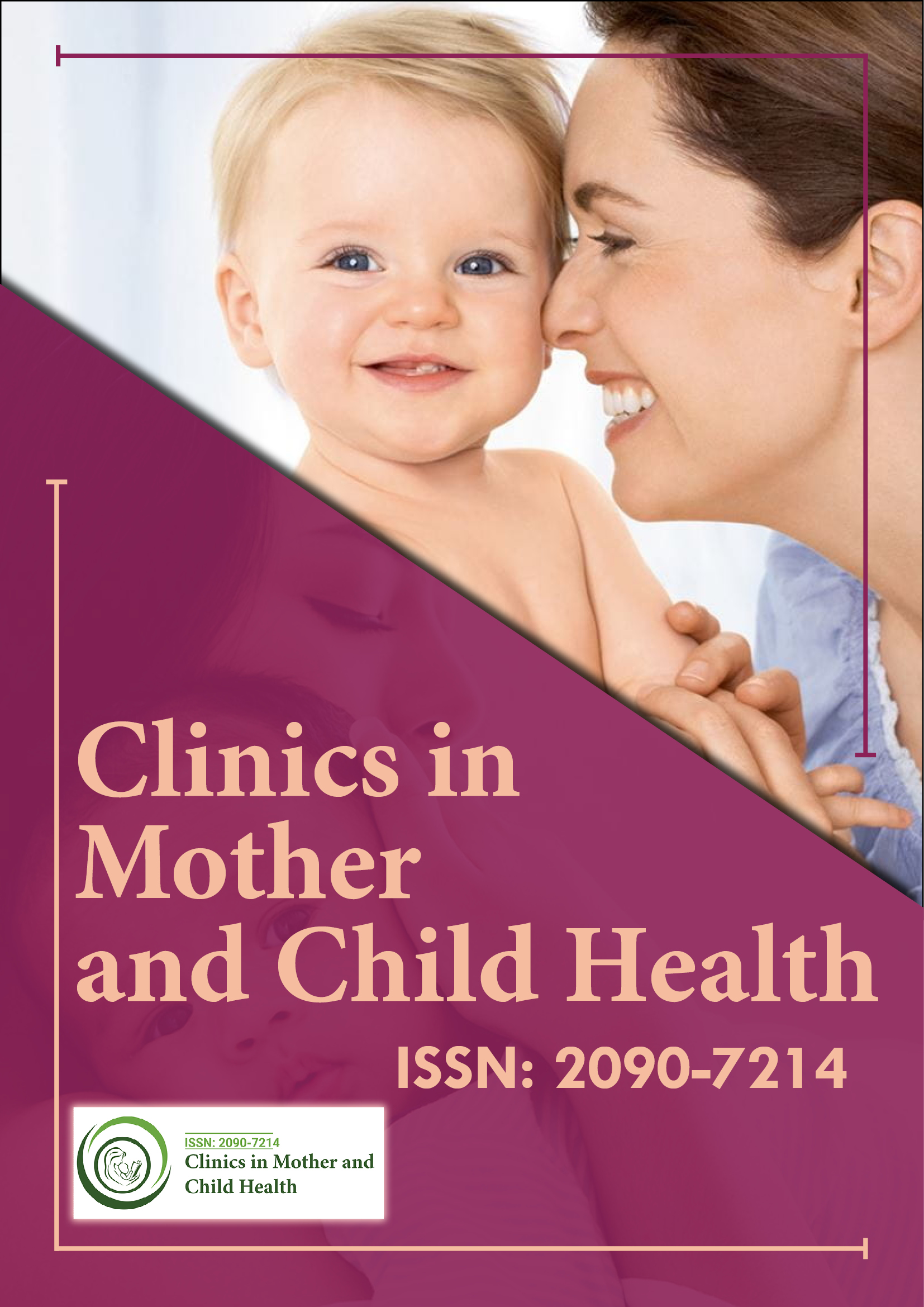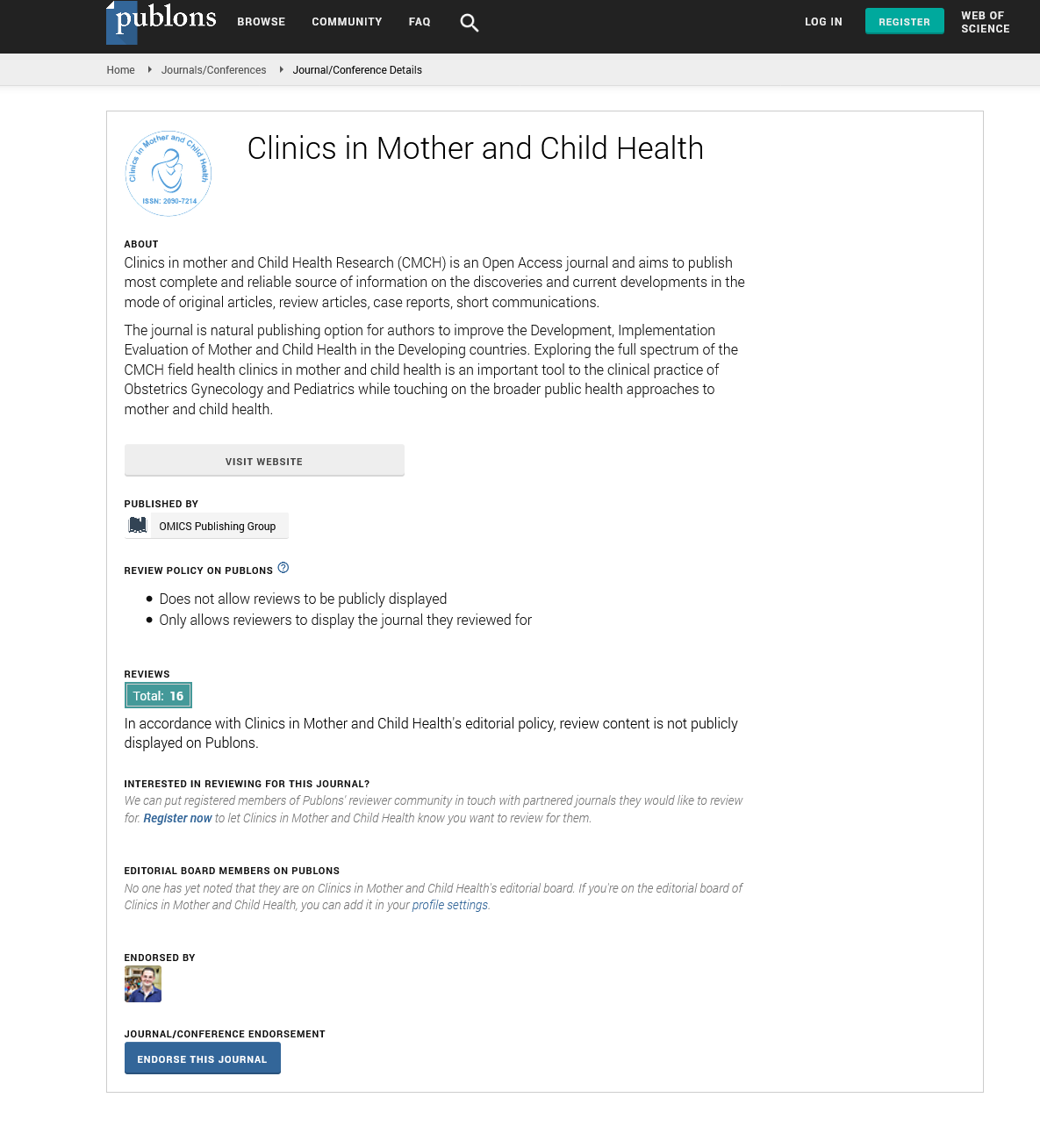Indexed In
- Genamics JournalSeek
- RefSeek
- Hamdard University
- EBSCO A-Z
- Publons
- Geneva Foundation for Medical Education and Research
- Euro Pub
- Google Scholar
Useful Links
Share This Page
Journal Flyer

Open Access Journals
- Agri and Aquaculture
- Biochemistry
- Bioinformatics & Systems Biology
- Business & Management
- Chemistry
- Clinical Sciences
- Engineering
- Food & Nutrition
- General Science
- Genetics & Molecular Biology
- Immunology & Microbiology
- Medical Sciences
- Neuroscience & Psychology
- Nursing & Health Care
- Pharmaceutical Sciences
Perspective - (2025) Volume 22, Issue 7
Improving Clinic Support for Mothers and Children in Kenyan Urban Slums
Peter Kamau*Received: 01-Jul-2025, Manuscript No. CMCH-25-30096; Editor assigned: 03-Jul-2025, Pre QC No. CMCH-25-30096; Reviewed: 16-Jul-2025, QC No. CMCH-25-30096; Revised: 21-Jul-2025, Manuscript No. CMCH-25-30096; Published: 28-Jul-2025, DOI: 10.35248/2090-7214.25.22.534
Description
In the informal settlements of Nairobi, clinics that serve pregnant women, infants and young children are essential to safeguarding health amidst challenges like poverty, overcrowding and poor infrastructure. These health facilities offer antenatal care, support for safe childbirth, immunizations to prevent disease, nutritional advice and education on infant and young child feeding. Young children are brought to these clinics for routine health checks, developmental monitoring and treatment for common illnesses such as respiratory infections and diarrhea. Clinic teams typically consist of nurses, midwives, general doctors and outreach workers who alternate between permanent clinics and mobile stations within the densely packed neighborhoods. A major difficulty is that many expectant mothers struggle to access these services in time. The settlements are characterized by narrow pathways and unplanned housing, making vehicle access difficult. Many women must walk long distances, often with young children in tow, causing delays especially when urgent care is needed. Public transportation is either too expensive or unreliable particularly during early mornings or late evenings further complicating timely visits.
Staff shortages compound the problem. A single midwife or nurse may attend to dozens of patients in one day, leading to long wait times and rushed consultations. Physical space in some clinics is limited, with few seats, poor ventilation and minimal shelter. Mothers are often forced to wait outdoors, exposed to harsh weather conditions. Basic medical supplies frequently run low — vaccines, sterile birthing materials and essential medicines may not always be available. Cultural factors also influence healthcare-seeking behaviors. Some women prefer traditional birth attendants or choose to give birth at home without professional assistance. Misinformation about vaccines, breastfeeding, or child nutrition often circulates within communities, sometimes passed down by elders or other family members. Language barriers and a general mistrust of government-run clinics can further discourage women from using formal health services.
Record-keeping systems are another area of concern. While a few clinics have adopted digital tools like tablets or smartphones to log patient visits, many still rely on paper files. This makes it difficult to identify children who miss vaccinations, monitor those with growth concerns, or track high-risk pregnancies. Inadequate data also hampers the ability to plan for supply needs or design targeted outreach efforts. Community-based initiatives help bridge these gaps. Trained health volunteers conduct home visits, reminding mothers about upcoming appointments, checking on newborns and sharing information on hygiene and safe practices. Some clinics set up temporary vaccination points in markets or busy streets, reducing the need for mothers to travel far. These outreach strategies have proven effective in increasing attendance and minimizing missed immunization doses.
Despite many services being free of charge, indirect expenses such as transport, childcare, or lost wages can discourage clinic visits. To address this, some health centers collaborate with local organizations to provide transport vouchers or organize group visits so mothers can travel together and split costs. Ongoing training for clinic staff is equally crucial. When nurses and midwives receive regular updates on safe delivery procedures, neonatal care and immunization protocols, the quality of care and outcomes for both mothers and babies improve. Periodic supervision and mentorship by municipal health officials also help ensure high standards are maintained. Improving clinic sanitation and infrastructure is another priority. Access to clean water, handwashing facilities, safe waste disposal, sturdy flooring and proper shelter all play a role in preventing infections and increasing trust among patients. Clinics that maintain hygienic, well-equipped environments tend to attract more users and see better health results.
Performance data from clinics in informal areas show that consistent service delivery leads to meaningful health improvements. Facilities that avoid running out of essential supplies, maintain regular hours and have adequate staffing typically report fewer maternal complications, lower infant mortality, better child growth metrics and higher vaccination rates. When women see that clinics are dependable and welcoming, they are more likely to return for regular check-ups and bring their children for preventive care. Sustaining these vital services requires reliable funding, effective leadership and alignment with community needs. Partnerships between national health authorities, donor organizations, local leaders and NGOs are essential to pool resources and coordinate interventions. When mothers, community health workers and clinic personnel are actively involved in decisions about clinic locations, service offerings and operating hours, it strengthens trust and improves service uptake. In the long run, such inclusive and responsive health systems contribute to better maternal and child health outcomes in Nairobi’s underserved slum communities.
Citation: Kamau P (2025). Improving Clinic Support for Mothers and Children in Kenyan Urban Slums. 22:534.
Copyright: © 2025 Kamau P. This is an open-access article distributed under the terms of the Creative Commons Attribution License, which permits unrestricted use, distribution and reproduction in any medium, provided the original author and source are credited.

